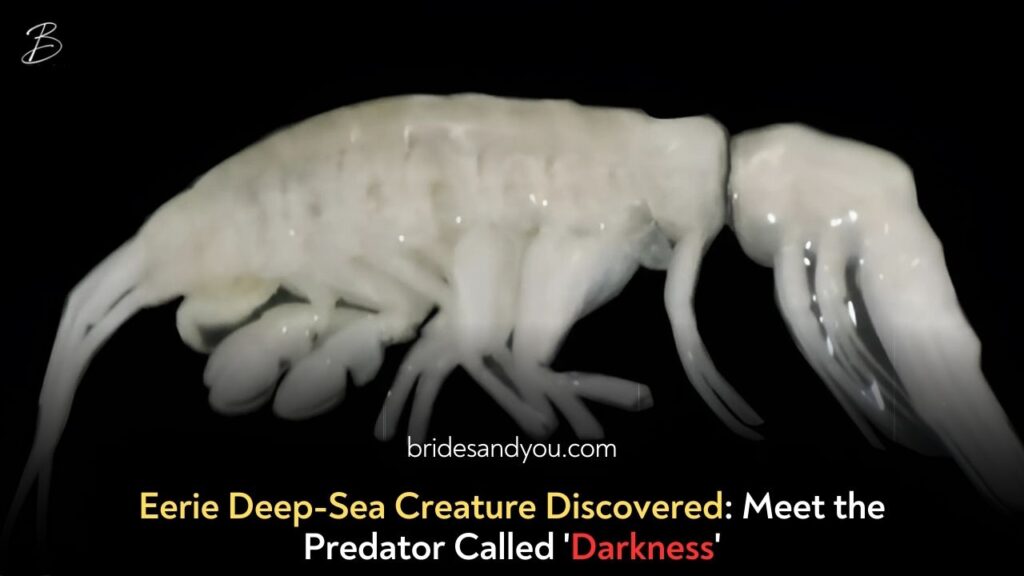Now Reading: Discovering Chemical-Eating Creatures in the Deep Pacific Ocean
-
01
Discovering Chemical-Eating Creatures in the Deep Pacific Ocean
Discovering Chemical-Eating Creatures in the Deep Pacific Ocean

A Vibrant Oasis in the Deep Sea
Imagine a world hidden beneath the ocean, where sunlight never reaches, yet life thrives in surprising ways. Scientists recently explored the Kuril-Kamchatka and Aleutian trenches in the northwest Pacific Ocean. They found vibrant communities of marine creatures living in the deep sea. These creatures don’t eat plants or animals like most living things. Instead, they use a process called chemosynthesis to turn chemicals into energy. This discovery is exciting because it shows how life can survive in extreme conditions.
What Are Chemical-Eating Creatures?
Chemical-eating creatures rely on chemicals like hydrogen sulfide and methane to survive. These chemicals seep from the seafloor in the dark, cold depths of the ocean. Unlike most animals that depend on sunlight or organic matter for food, these creatures use chemosynthesis to create energy. The main stars of this discovery are tube worms and clams, which form thriving communities in the deep Pacific Ocean. Some of these creatures might even be new species, adding to the wonder of this find.
Exploring the Kuril-Kamchatka and Aleutian Trenches
The Kuril-Kamchatka Trench stretches about 2,900 kilometers off the coast of Russia’s Kamchatka Peninsula. The Aleutian Trench runs roughly 3,400 kilometers near Alaska and the Aleutian Islands. Scientists used a special submersible called the Fendouzhe to dive into these trenches. They reached depths as great as 9,533 meters (31,276 feet) in the Kuril-Kamchatka Trench. This is deeper than Mount Everest is tall! These trenches are part of the hadal zone, a region where Earth’s crust plates slide under each other, creating unique environments.
Why This Discovery Matters
This discovery changes how we think about life in the deep sea. Scientists once believed that life at such extreme depths was rare and limited. However, the thriving communities of chemical-eating creatures prove otherwise. They live in a place with crushing pressure, no sunlight, and freezing temperatures. Yet, they flourish like a “vibrant oasis” in the deep Pacific Ocean. This finding challenges old ideas and opens new questions about how life adapts to harsh conditions.
The Role of Chemosynthesis in Deep-Sea Life
Chemosynthesis is like a superpower for these deep-sea creatures. Tiny microbes in the trenches use chemicals from the seafloor to produce energy. Tube worms and clams either eat these microbes or live with them, using the energy they create. This process is different from photosynthesis, where plants use sunlight to make food. Chemosynthesis allows life to exist in places where sunlight can’t reach, showing nature’s incredible ability to adapt.
A Deeper Look at Tube Worms and Clams
The ecosystems in the trenches are dominated by tube worms and clams. Tube worms, which can be red, gray, or white, grow up to 20-30 centimeters long. Clams, usually white, can reach up to 23 centimeters. These creatures form dense clusters, creating a bustling underwater community. Some of these animals might be species never seen before, which excites scientists. They plan to study these creatures further to learn more about their unique survival methods.
What’s Next for Deep-Sea Research?
This discovery is just the beginning. Scientists, like Mengran Du and Xiaotong Peng from the Chinese Academy of Sciences, want to explore how these creatures survive in such extreme conditions. They also hope to understand how chemosynthesis works in detail. Future studies could reveal more about the diversity of life in the deep Pacific Ocean and other trenches around the world. This research might even help us learn about life on other planets with similar harsh environments.
Why the Deep Pacific Ocean Fascinates Us
The deep Pacific Ocean is one of Earth’s last unexplored frontiers. This discovery of chemical-eating creatures shows how much we still have to learn about our planet. The Kuril-Kamchatka and Aleutian trenches are like hidden worlds, full of surprises. Each dive into these depths brings us closer to understanding the mysteries of life. It reminds us that even in the darkest, coldest places, life finds a way to thrive.











